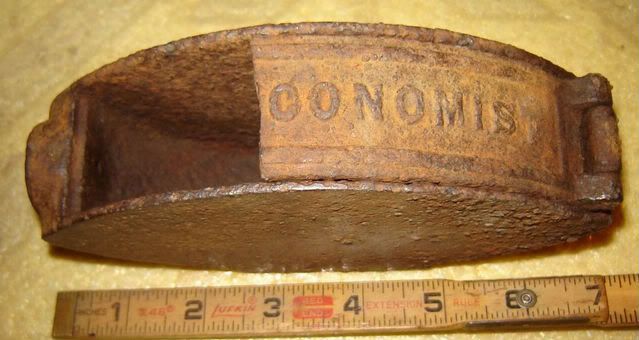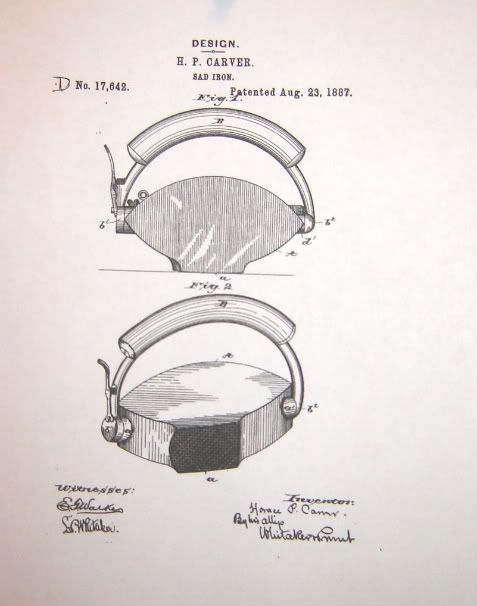David
It very well may be the patent for your find, however, I would think that a bit more research is needed to really nail it down. While visually it's close, it's not an exact match. Now that you've got what you believe is the patent for the item you found, in the patent you have the name to which the patent was issued (i.e. Horace P. Carver; Nebraska City, NE; & Carver, Sprague & Co. Racine, Wisconsin), and what the item's intended use was. With this additional information see if you can track down the company, brand name, etc. Flatirons are a fairly popular collectible item, the best of luck in your quest.
It's very rare that you'll find a patent that reflects a brand name of a product. A patent's intent is to protect for a specific period of time, a supposed unique process and/or method from unauthorised (i.e. licensed by the holder of the patent) by others. In exchange for a full disclosure of the said process and/or method.
If you go back to the first page displayed after you typed in a patent number to search for. In the middle of the screen you'll see the following information (i.e. US Patent, Issue Date, & Current US Class). The "Current US Class" shows the classification (i.e. process/method) that the patent would fall under if the patent were applied for today. The information below that are the descriptions from the current U.S. Patent Classification Guide, for the respective class and subclass categories.
[pre]United States Patent D17,642
Issue Date: August 23, 1887
Current U.S. Class:
D32/68
--*****--
Class D32 WASHING, CLEANING, OR DRYING MACHINE
Subclass: 68 Flatiron:
This subclass is indented under subclass 35. Design
for instrument used to iron textiles or apparel.
(1) Note. Includes flatiron combined with holder.[/pre]






